How to choose your bike socks?
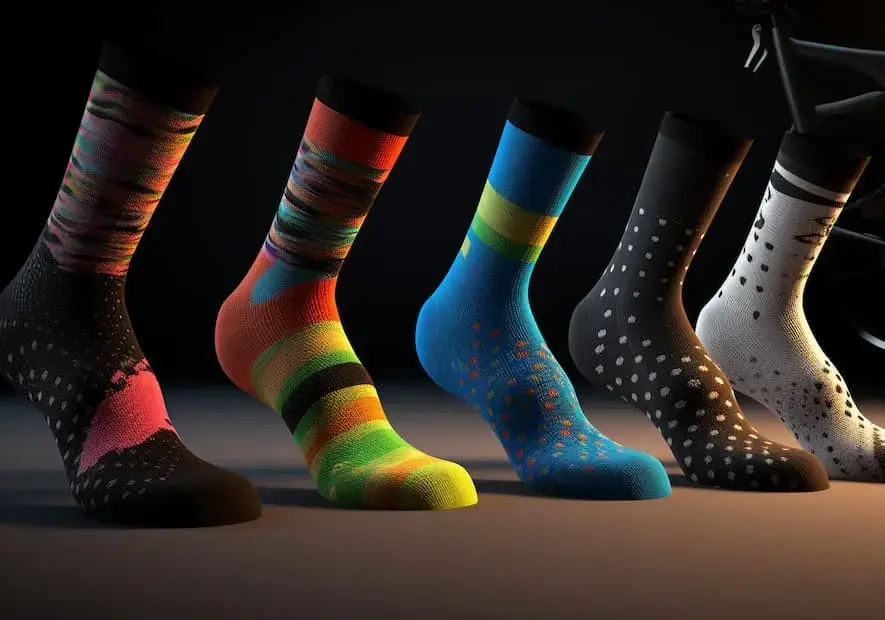
- 1. Introduction to Cycling and the Importance of Bike Socks
- - Understanding the Role of Bike Socks in Cycling
- - Assessing the Impact of bike Socks on Performance
- 2. Key Factors to Consider When Choosing Bike Socks
- - Evaluating Material Options for Bike Socks
- - Importance of Bike Sock Size and Fit
- - Considering Bike Sock Height for Comfort and Performance
- - Seasonal Factors in Bike Sock Selection
- 3. Understanding the Functionality of Bike Socks
- - Bike Socks for Moisture Management
- - Biking Sock's Role in Blister Prevention
- - Thermal Regulation Features in Bike Socks
- 4. How to Care for Your Bike Socks to Enhance Longevity
- 5. Conclusion: Pedal Ahead with Your Perfect Bike Socks
1. Introduction to Cycling and the Importance of Bike Socks
Cycling isn't just about pedaling your wheels; it's also about ensuring every gear functions optimally for a seamless ride. One such gear, often overlooked, yet tremendously impactful, are bike socks. Remember, your feet are powering the ride, and keeping them comfortable enhances your performance. Unlike the ordinary socks, bike socks are designed specially to meet the demands of cycling. They act as a buffer, protecting your feet from friction, sorting out sweat, and offering additional padding for comfort. Choosing the right pair of bike socks can make a significant difference to your ride, and the cycling experience overall—just as wearing the right helmet provides safety, the right socks ensure comfort. So let's pedal into the world of cycling socks, their importance, and how they impact your biking endeavors.
- Understanding the Role of Bike Socks in Cycling
As an avid cyclist, you likely understand the critical role that gear plays from helmets to handlebars, pedals to shoes. However, an often-overlooked item that can significantly impact your ride is <%strong%>bike socks<%/strong%>. At a glance, bike socks may just appear to be a simple necessity to cover your feet, but in reality, they are much more. Bike socks are your first line of defense when it comes to comfort and even performance on a ride. The role of bike socks in cycling extends beyond keeping your toes cozy. A good pair of bike socks can provide the needed <%strong%>cushioning<%/strong%> to dampen vibrations and smooth out your ride to enable you to pedal longer comfortably. Additionally, bike socks can <%strong%>offer compression<%/strong%>, improving blood flow, reducing muscle vibration, and speeding recovery. Aside from these, bike socks play a fundamental role in <%strong%>regulating temperature and managing sweat<%/strong%>. Using unique fabrics, bike socks can wick moisture away from your feet, keeping them dry and comfortable on even the longest or hottest rides. Remember, it's more than just a sock; it's a critical component in your cycling outfit, helping to support your performance on every ride. Whether it's a sunny tour or a grueling race against the clock, with the right bike socks, every pedal counts!
- Assessing the Impact of bike Socks on Performance
Assessing the Impact of Bike Socks on Performance Have ever pondered on the interesting question: 'Can bike socks genuinely ignite your cycling performance?' It might astound you that such a small piece of apparel could play such a crucial role. Bike socks, quite interestingly, bring about monumental impact on your cycling performance, both directly and indirectly. Good quality bike socks are designed with special features that optimize comfort, reduce sweat, and prevent the formation of blisters, all of which directly impact your cycling experience. Consider this. When you’re pushing yourself through a grueling cycle, the last thing you want is your feet squirming uncomfortably due to excess moisture or developing painful blisters. The distraction and discomfort could slow you down, inhibit your rhythm, and eventually compromise your overall performance. This is where high-performance bike socks come into picture. They keep your feet dry and comfortable, allowing you to focus completely on your route and pedaling power. The impact of bike socks on your performance also comes indirectly by boosting your confidence as a cyclist. When you're fully equipped with the right gear, you feel prepared and unstoppable, and this can significantly step up your performance gear. So, don’t underestimate the power of a good pair of bike socks - it could be the very gear unlocking your next level in cycling.
2. Key Factors to Consider When Choosing Bike Socks
When it comes to cycling, the importance of choosing the right bike socks cannot be overstated. Factors to consider include material, size, fit, and sock height. The material of your bike socks can significantly impact comfort and performance, with options like Merino wool providing superior moisture-wicking capabilities. It's vital to find socks that fit snugly but don’t constrict, and the right size not only enhances comfort but also deters blister formation. Sock height plays into both comfort and style - you might prefer no-show socks or perhaps height that reaches mid-calf. Seasonal adjustments are important too; thermal insulated socks can offer much-needed warmth in colder months. The perfect pair will ensure your ride remains comfortable, regardless of distance or weather.
- Evaluating Material Options for Bike Socks
When selecting bike socks, evaluating the various material options is crucial to ensure that you make a decision that benefits your overall cycling experience. For most turns and rides, a blend of synthetic fibers, including polyester, nylon, and spandex, is commonly preferred. Synthetic materials are known for their incredible moisture-wicking properties, ensuring your feet stay dry and comfortable throughout your ride. However, if you're riding in colder weather, wool blend socks may provide the needed warmth, in addition to good moisture management. Meanwhile, cotton socks, while they may seem like a tempting economic choice, are not recommended for cycling as they retain moisture, potentially leading to discomfort and blisters. The thickness of the sock is another aspect determined by the material. Ultra-light and lightweight socks are perfect for hot summer rides while medium to heavyweight socks come to the rescue in colder temperatures. Investing time and thought into material and its functionality compatibility with your particular riding requirements can significantly enhance your comfort and performance. After all, who wouldn’t want their feet to feel fresh and blister-free even after a strenuous cycle ride? It's these smaller details that truly impact your riding in a big way, so always choose wisely!
- Importance of Bike Sock Size and Fit
The importance of bike sock size and fit cannot be overstated. A perfect match has a dramatic impact on your cycling performance and overall comfort. Just like the ill-fitting footwear can lead to discomfort and injuries, a poor-fitting bike sock is a recipe for woes. A sock that's too tight might restrict blood flow, resulting in numbness and disturbing agony in your feet. On the flip side, a too-loose sock invites unwanted friction against your skin, increasing the likelihood of developing painful blisters. Thus, it's crucial to find the bike sock size and fit that complements your feet excellently. Understanding your foot's size isn't particularly tricky - it's about getting the measurements right. Ensure you measure the length, width, and circumference of your foot at its most substantial parts. But size isn't everything; how a sock fits around your foot and inside your cycling shoe is equally important. Too much material bulging can cause discomfort, while too little might lead to exposure. In conclusion, a well-sized and well-fitting bike sock leads to happier feet and a more enjoyable ride. It's a small detail with significant implications. So why compromise? Always strive for the perfect bike sock size and fit - your feet will thank you!
- Considering Bike Sock Height for Comfort and Performance
When it comes to **comfort and performance** in cycling, the height of your bike socks plays a surprising yet significant role. Riders often overlook this factor, but choosing the right height can drastically impact your comfort levels during long rides. A high sock provides more coverage, potentially leading to improved muscle support and less skin irritation from a bike's ankle straps. On the other hand, a lower sock may be more suitable for riders aiming for minimalism and a lighter feel. This preference varies widely among cyclists, depending on personal comfort, calf size, and the type of cycling they engage in. For mountain bikers who face rough terrains, a higher sock offers added protection against lower leg abrasions. Road cyclists, in contrast, might opt for lower socks for a sleek, less restrictive feel. Moreover, sock height can affect thermal management during rides in varying weather conditions. A higher sock might provide better insulation during colder rides, while a lower one can offer more ventilation in hotter weather. Therefore, keeping your specific needs and **comfort factors** in mind while considering bike sock height is crucial to ensure optimal performance. Remember - you want to pedal comfortably, not constantly adjust your bike socks!
- Seasonal Factors in Bike Sock Selection
Selecting bike socks based on the season is a factor often overlooked by cyclists, yet significantly impactful in enhancing one's performance and comfort. Becoming aware of such Seasonal Factors in Bike Sock Selection could be the breakthrough in your biking experience. During warmer months, you'll want socks that are thin, breathable, and efficient in wicking away sweat. This comes in handy in preventing the growth of bacteria, hence keeping away foul odors and infections. On the contrary, your cold season bike socks should be made of warmer material like merino wool, which also has excellent moisture-wicking abilities. Moreover, these socks have a unique feature that traps heat, keeping your feet warm despite the chilly weather. Never underestimate the drop in performance that can be induced by numb toes! Whether it's the scorching summer or frosty winter, donning the right pair of bike socks will keep your feet comfortable, dry, and at the perfect temperature. Therefore, remember to adjust your bike sock wardrobe with every changing season. Your attention to these smaller details could be the difference between leading or trailing in your biking escapades.
3. Understanding the Functionality of Bike Socks
The functionality of bike socks is paramount to cyclists, directly impacting their comfort and performance. These socks play a crucial role in managing moisture, with materials such as merino wool and synthetic fibers expertly wicking away sweat to keep feet dry. This attribute aids significantly in blister prevention, a common concern for long-distance riders. Furthermore, bike socks also serve a function in thermal regulation. During winter rides, thermal bike socks provide insulation against the cold, while in summer months, they offer breathable coverage, enhancing comfort. Hence, understanding these functional aspects can lead to a more enjoyable cycling experience, don't you think?
- Bike Socks for Moisture Management
One pivotal aspect of understanding the benefit of bike socks lies in their role in moisture management. A sound pair of bike socks is designed to efficiently wick sweat away from your skin, ensuring your feet remain dry and comfortable throughout your cycling journey. Keep in mind, when your feet are uncomfortably damp, this not only leads to discomfort, but can additionally cause blisters and potentially effect your overall performance. This perspective highlights the notion that cycling is not merely about the bicycle or your physical endurance. Small details like a quality pair of bike socks designed for effective moisture management can hold remarkable impact on your performance. Consider the scenario of embarking on a long-distance ride. Without proper gear to manage the inevitable sweat build-up, you face preventable challenges that could have been avoided by investing in appropriate cycling socks. Therefore, when choosing your next pair, remember that sock materials that maintain high levels of breathability and, importantly, moisture wicking capabilities can significantly upgrade your cycling game. All these elements just go to show how pedal power is highly influenced by what's hugging your feet!
- Biking Sock's Role in Blister Prevention
Bicycling can indeed be a thrilling sport, but the joy might turn sour when it leads to uncomfortable blisters. One often overlooked function of bike socks is their vital role in blister prevention. Blisters often form due to friction caused by your feet rubbing against your shoes, particularly during long-distance cycling. So how do bike socks help? Well, a key feature of good cycling socks is their snug fit, which in turn reduces the friction between your feet and the shoes. Ideally, look for cycling socks that are knit from materials like merino wool or synthetic fabrics. These materials not only have excellent moisture-wicking abilities, but also offer the needed padding to reduce friction. Moreso, some bike socks feature reinforced sections at the heels and toes, which are hotspot regions for blisters. Keep in mind that blisters are not just painful, they can significantly impact your cycling performance and even halt your journey. So don't underestimate the importance of a pair of well-fitted, aimed at blister prevention cycling socks. After all, as they say, prevention is better than cure, isn't it?
- Thermal Regulation Features in Bike Socks
A pivotal feature you shouldn't overlook when choosing your bike socks is thermal regulation. Ever wondered why your feet get unbearably cold or hot during your cycling escapades? Well, it turns out, the type of socks you wear play a significant role in keeping your feet at just the right temperature. Bike socks with excellent thermal regulation features utilize technical fabric blends — materials that can adapt to varying weather conditions. For instance, Merino wool is a natural powerhouse offering both warmth in the chills and sweat-wicking properties to cool your tootsies down when the sun's blazing. Similarly, innovative synthetic fibers, like Coolmax and Thermolite, work to keep your feet warm in cold weather and cool in the heat. Remember, comfort equates to performance when cycling. Having socks that cater to your thermal comfort can significantly enhance your biking sessions, permitting you to focus on the journey rather than your freezing or roasting feet. So, when you’re next in the market for bike socks, consider the thermal regulation features; it could make the difference between a good ride and a great one!
4. How to Care for Your Bike Socks to Enhance Longevity
Maintaining the quality and enhancing the longevity of your bike socks stems from proper care procedures. Just as you would with your performance bike, tender loving care to your socks guarantees not only extended usability but also sustained functionality. First off, appropriate cleaning, which involves gentle hand washing or using the delicate cycle on your machine, can significantly minimize wear and tear. Kindly avoid harsh detergents as they can degrade the fabric, affecting the sock's moisture-wicking and thermal regulation features. Moreover, air-drying your socks as opposed to machine drying preserves the elasticity and fit. These simple yet effective care tips can ensure your bike socks continue to deliver optimal performance on every ride.
- Proper Cleaning and Drying Techniques
Proper care for your bike socks is vital in maintaining their condition and effectiveness. One of the most crucial steps is the cleaning and drying technique you use. While washing, it is highly recommended to use a gentle cycle and mild detergent to keep the integrity of the fabrics. Always avoid bleach as it can break down the sock material over time, reducing its performance characteristics. After washing, steer clear of direct heat while drying. Laying the socks flat to dry naturally is preferred. Using a dryer might seem convenient, yet the high heat can cause shrinkage or warp the sock's shape, compromising fit and comfort during your cycling routine. If you must use a dryer, ensure that the heat setting is on low. Additionally, turning socks inside-out before washing helps keep them in optimal condition. By doing this, you can eliminate any dirt or grime that may have built up inside. Remember, proper care prolongs the life of your bike socks, enhancing your cycling experience in the long run. Lastly, paying attention to instructions on the sock's care label is imperative. These guidelines are specifically tailored to aid in the cleaning process while ensuring the longevity of your bike socks. In essence, the key lies in the care you provide to your cycling gear.
- Tips to Avoid Damage and Prolong Usability
Maintaining the durability of your bike socks enriches your cycling experience and saves you from regular expenditure in replacements. To achieve this, it's crucial to understand how to avoid damage and prolong usability. Perhaps the most important step is following proper cleaning practices. Bike socks need to be laundered gently to preserve their fabric structure. Use a mild detergent and cooler water temperatures to prevent shrinkage and retain sock elasticity. For drying, steer clear of the high heat of the dryer. Opt to air dry instead, avoiding direct sunlight which may deteriorate the fiber quality over time. Additionally, turning socks inside-out prior to washing can minimize pilling and keep them looking fresh for longer. Consider using a mesh laundry bag during wash to prevent your socks from snagging or getting stretched out with other clothes. In a nutshell, appropriate care offers longevity, even as you persistently pedal away into your chosen paths. Keep in mind that the key to extending the lifespan of your bike socks is treating them as the specialized gear they are because every thread counts when it comes to securing your comfort and performance on the saddle.
5. Conclusion: Pedal Ahead with Your Perfect Bike Socks
In conclusion, choosing the right bike socks can significantly elevate your cycling experience. Remember, your selections need to align appropriately with your biking needs and preferences, whether that implies prioritizing material, size, fit, or height. Factor in the seasons, too; your needs will likely change from winter to summer. But once you pinpoint your ideal biking sock, the advantages are immediate – enhanced moisture management preventing blisters, superior thermal regulation, and overall more comfort while cycling. However, don't overlook their care. Proper cleaning and drying techniques can extend their life significantly. Stick to these guidelines, and soon, every cycling journey will be a better experience, one pedal at a time. Now, isn't it time you began your journey by picking out the perfect pair of socks?
- Recap of How to Choose Your Bike Socks
As we wind down, it's crucial to remember the salient points when it comes to choosing your bike socks. The process, though seemingly straightforward, involves considering key aspects to ensure optimum comfort and performance. Firstly, the material of your biking socks plays a significant role in the comfort, breathability, and apt moisture wicking capabilities. For instance, Merino wool, Coolmax, and Lycra are popular choices for their unique benefits. The size and fit of your bike socks, likewise, contribute to enhanced performance and blister prevention. Socks that are too tight or loose could potentially limit your cycling prowess. Look for socks that snugly hug your feet without causing discomfort. Moving on, the height of your cycling socks is primarily a matter of personal preference and comfort but should be in adherence to potential cycling guidelines if competing professionally. Finally, don’t forget the seasonal factors. Lighter socks are excellent for summer riding, while thermal, insulating variants should be your go-to for colder months. Remember, every feature lends itself to your overall cycling performance, making the humble bike sock an unsung hero of your biking ensemble. Choose wisely to make the most of each pedal stroke!
- The Difference the Right Bike Socks Can Make
The power of a good pair of bike socks cannot be exaggerated when discussing their impact on your cycling performance. While at first glance, they might seem like negligible pieces of athletic gear, the right pair can significantly improve your biking experience. With an appropriate choice, it's not just about avoiding blisters and keeping your feet dry. It's taking a stride towards optimized comfort, enhanced moisture control, optimal warmth, and in turn, better cycling efficiency. Riding miles on a bike would be a complete different ball game when you find socks that strike that perfect balance between snug fit, right height, and suitable material. It's that small detail that can create a massive difference, enhancing your stamina and saving you from all possible discomfort during your ride, and making your cycling all the more enjoyable. So, if you're serious about your cycling endeavors, it's time you too started focusing on the intricate details, starting with the mundane-seeming but incredibly significant - bike socks. Because the right bike socks do make a difference, and it's time we appreciated their role in making our journey smoother and more efficient. It's only when you've felt the difference they make, would you truly understand their unnoticed importance.
In summary, the perfect bike socks integral to your cycling experience are determined by numerous factors. Material, fit, height and seasonality all play vital roles in your selection. Remember, they aid in moisture management, blister prevention and thermal regulation. Caring for your socks ensures longevity and continual comfort. Therefore, give thought to your choice, allow this guide to assist you, and experience the remarkable difference the right bike socks can make to your rides. Pedal on with confidence!
What is the role of bike socks in cycling?
Bike socks provide comfort, manage moisture, prevent blisters, and offer thermal regulation, enhancing the overall cycling experience and performance.
How do I choose the right material for bike socks?
Biking socks are available in a range of materials such as wool, synthetic, and cotton. The choice should be based on factors such as weather conditions, your comfort level and ability to manage moisture and prevent blisters.
Why is the fit and size of bike socks important?
The fit and size of bike socks directly impact comfort and performance. A perfect fit prevents unwanted friction and, consequently, blisters, whereas an improper fit may result in discomfort and compromised performance.
Should I consider the height of bike socks?
The height of bike socks affects comfort, protection, and performance. Higher socks offer more leg coverage which is good for protection, while short socks are cooler which benefits performance in warm climates.
How to care for bike socks to enhance their longevity?
Proper care for bike socks involves adequate washing and drying techniques. Gentle washing and air drying can prevent damage, maintaining the functionality of the socks and prolonging their usability.



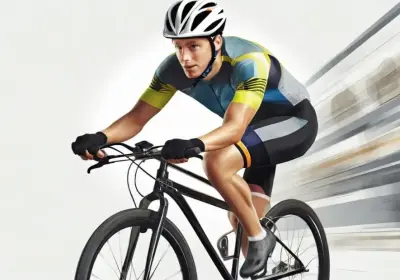
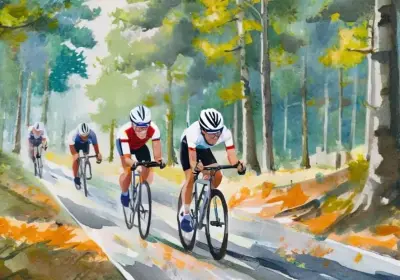














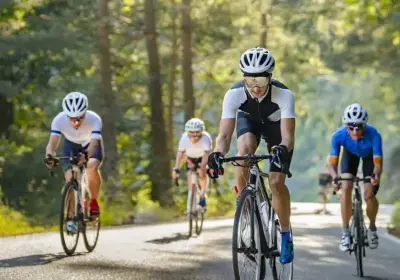







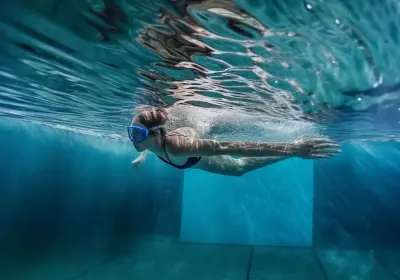
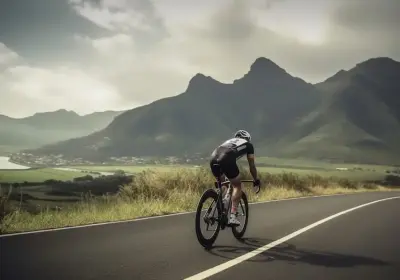






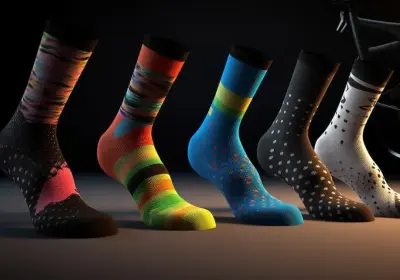


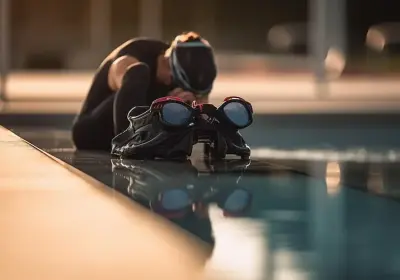

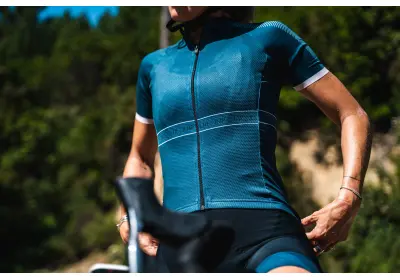
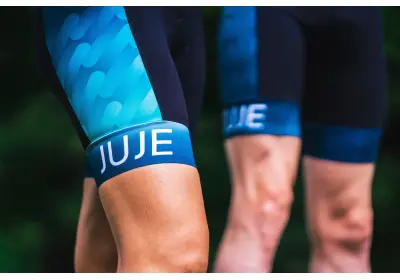



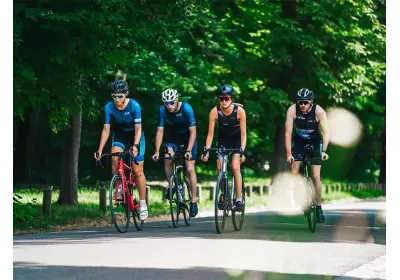
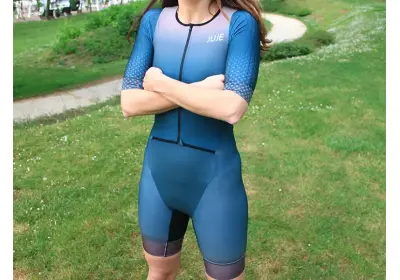

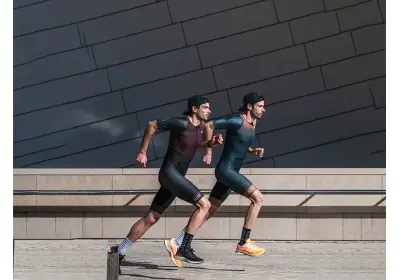
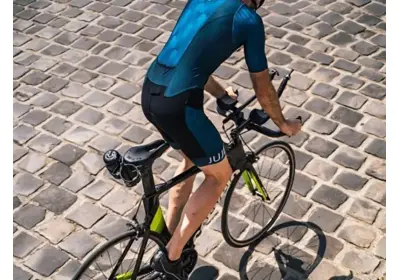
Leave a comment